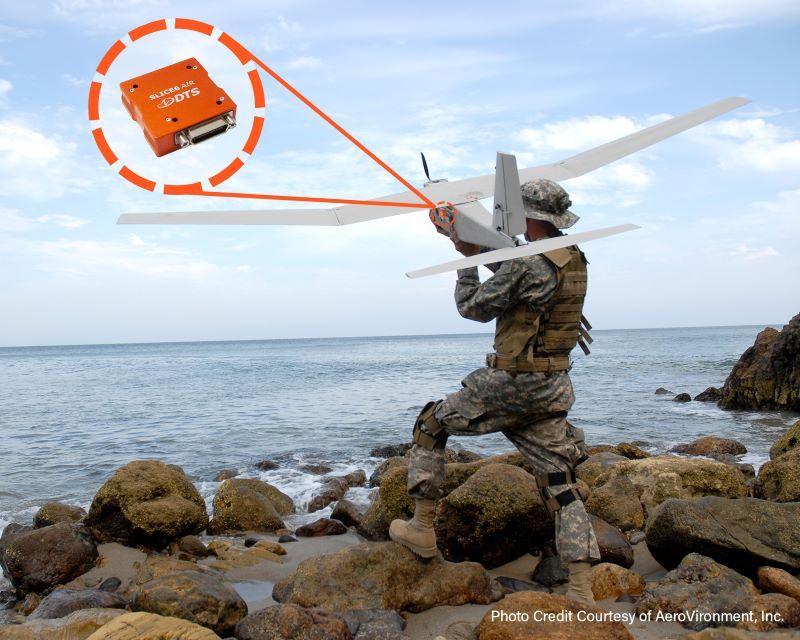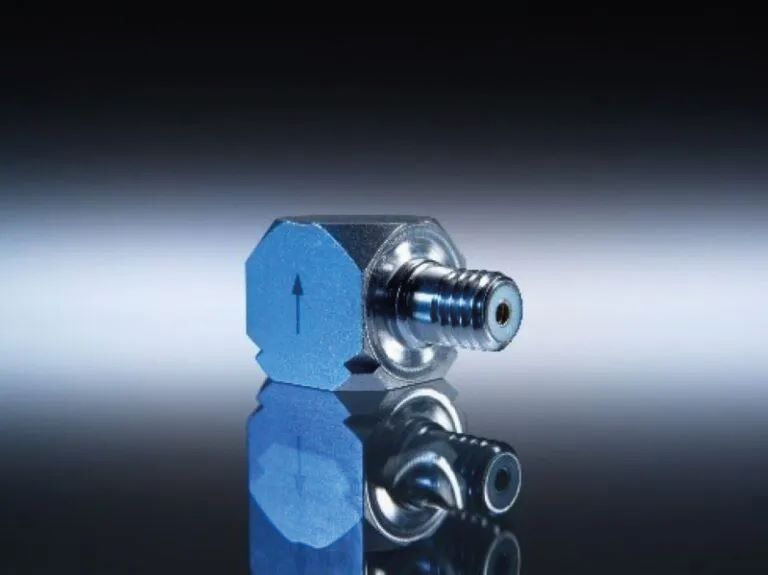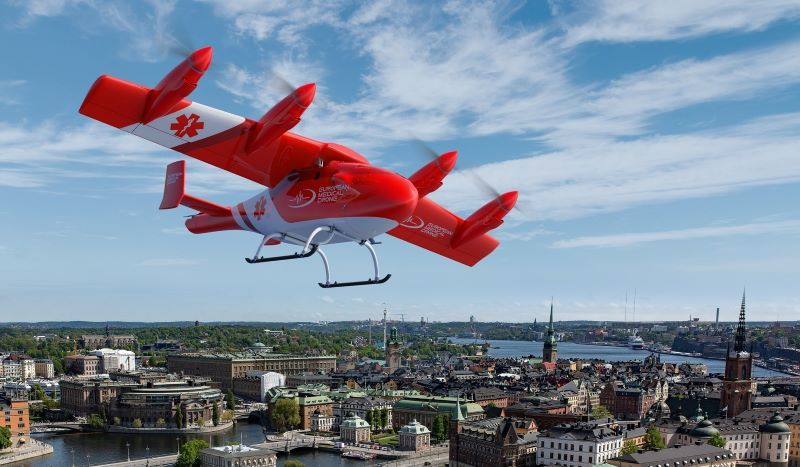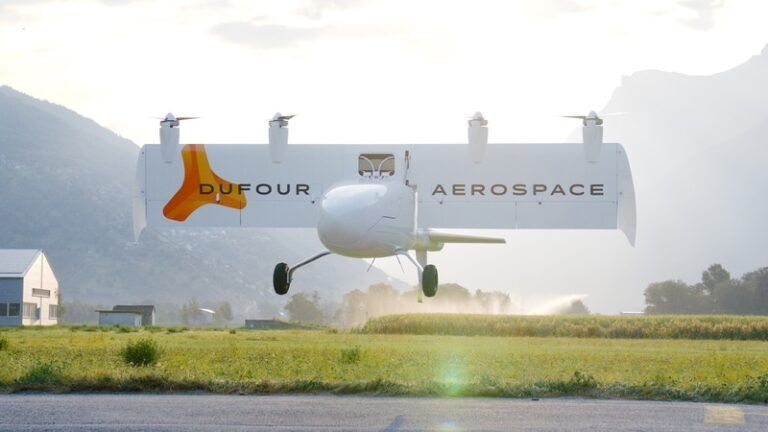Drones and eVTOL aircraft are far smaller than conventional aircraft, so the size and weight of sensors and instrumentation used during flight testing must be reduced to prevent them from exerting an influence on results.
As demand for smaller and lighter data acquisition systems (DAQ) grows, more companies are considering how best to address the challenges posed by testing drones.
So, what type of equipment and products are used to test drones and gather data on performance and materials behavior on the ground and in the air? How does testing drones differ from larger, more conventional aircraft, specifically in terms of sensors and other DAQ equipment? What are the common challenges and solutions when fitting and using DAQ equipment for drones? And how can users
ensure the accuracy and reliability of data collected by these sensors during testing?
Apples to oranges
An increasing number of companies are offering sensors and DAQ products suitable – and sometimes specifically tailored for – testing drones. A company that has been active in this space for several years is California, USA-based Diversified Technical Systems (DTS), a frontrunner in the miniaturization of data acquisition systems, particularly for in-flight testing to measure shock, vibration, temperature and other variables.
According to Huy Nguyen, aerospace and defense manager at DTS, his company’s continued emphasis on SWaP (size, weight and power) optimization for its range of products “aligns well with the demands of the drone market.” In addition, the major difference between testing full aircraft and drones (unmanned aerial vehicles – UAVs) is that a lower number of parameters can be captured or recorded on a UAV.
“In an aircraft, you are looking at hundreds if not thousands of vibration accelerometers, and that’s just counting the analog parameters. There are also avionics buses for aircraft communication, weapons communication, pilot, audio and video.
“It is an apples and oranges comparison,” he says. “With a UAV, sensors are often single-use – designed to be expendable for a single mission.
“Hundreds of drones are currently being fielded-tested, and we are seeing the results of that in the Ukraine war. During testing, these drones need data acquisition solutions that are lower cost, smaller with fewer parameters, that can be deployed quickly to help them get to market faster,” he adds.

Key differences
Another company with experience in this field is Switzerland-based measurement company Kistler, which supports aerospace test engineers around the world. The company provides a portfolio of sensors for measuring pressure, force, torque, and acceleration and signal conditioning, as well as data acquisition equipment and software for visualization and data management.
Martin Mariňák, head of business development – test and measurement at Kistler believes it is important to be careful in how an aircraft is defined as a drone when understanding the differences between testing procedures. “The most obvious factors are size, weight and its intended application or use case,” he says.
“Testing requirements vary between smaller, lighter drones designed for applications where they do not interfere with people, and larger drones that are used in more demanding environments or applications,” he says.
Mariňák also notes that testing for conventional fixed and rotary wing aircraft is more mature with established testing procedures, certification processes, and infrastructure, including access to dedicated test facilities. “There are bigger budgets allocated for testing, stricter regulations and test procedures, along with extensive industry know-how,” he says.
“Also, traditional aviation involves passenger transport, which adds another layer of complexity to testing requirements and safety regulations. The emerging drone industry is still in the process of defining its standards, regulations, and testing procedures.”

(Photo: Kistler Group)
Mix and match
Switzerland-based Dufour Aerospace is using the latest sensors and DAQ equipment to test and validate prototypes for its automated Aero2 VTOL drone. The 6m-wide, 200kg (450 lbs) aircraft, which Dufour calls “the Swiss army knife of drones”, is expected to enter into service next year.
The company is running a combination of component, bench, ground and flight testing programs. Daniel Bazzani, flight test engineer lead at Dufour says, “To help control costs we combine off-the-shelf hardware with in-house software. This includes our data acquisition, which is done with a Raspberry Pi and a telemetry link that uses a multi-sim 4G modem.
“For some sensors, where we require precise measurements, we use a calibrated air data boom from Swiss Air-Data,” he says. “To track our aircraft weight and balance we use electronic scales and to validate our control surface rigging we use a simple digital inclinometer to measure deflections,” he adds.
DuFour’s engineers have found much traditional testing instrumentation too expensive and heavy for use on its prototype drones, which are limited in terms of size and payload capability.
Domenico Leonello, flight test engineer at Dufour Aerospace says, “Recent developments in consumer IT and telecommunications – cell phones, PCs, tablets and smart sensors – mean off-the-shelf products can now compete in terms of performance with traditional aeronautical systems at cheaper prices.
“Moreover, current electronic miniaturization development allows the use of a large number of sensors – even on vehicles much smaller than traditional aircraft,” he adds.

High stakes
In Nguyen’s view, the biggest challenge when fitting and using sensors and DAQ equipment to drones is that they are often purpose-built devices. Testing parameters and specifications may change on a case-by-case basis. For example, if a drone’s main purpose is intelligence surveillance and reconnaissance (ISR), there will be less free space available for the installation of DAQ equipment.
Nguyen says, “One customer is developing a delivery drone with a carrying capacity of about 5kg. That doesn’t leave much room for data acquisition systems. Our miniature SLICE6 AIR data acquisition unit weighs only 50g.”
According to Nguyen, further challenges can also occur when carrying out destructive testing because there is only a single chance to gather the required data. DTS has experience in products used in automotive crash testing, some of which it has miniaturized for use in the aerospace and defense markets.
“It takes millions of dollars and many years to develop a test vehicle, which is why they have to be confident they are going to get accurate, reliable test data they can trust,” Nguyen says.
“The US Department of Defense has recognized the effectiveness and threat that comes with UAVs. A lot of money has been invested into upgrading testing infrastructure and capabilities in the USA to support unmanned warfare.
“Based on what has happened in Ukraine, there has been a big shift in R&D to focus on unmanned technologies, rather than manned helicopters.”
Limitations
Key considerations then for testing drones, alongside the UAV’s size, weight, and use case is the type of test being conducted. Mariňák says, “It will vary depending on whether we are discussing ground or flight testing. Compared to traditional aviation, the equipment must be smaller, lighter, and in the case of flight testing possibly wireless.”
According to Leonello, the major challenge facing engineers testing drones are the limitations in payload capability, space and power availability. “The use of smart sensors can help to mitigate these limits, maintaining the capability to acquire the data needed for testing and flight,” he says.
“Moreover, drones mostly use electrical power. The proximity of sensors to power electronics such as motors and inverters could lead to strong electromagnetic interference.
“In these situations, smart sensors, together with a careful analysis of their positioning and wiring, could help reduce possible interference.”
According to Bazzani recent improvements in test equipment for drones include reductions in size and weight, as well as improved performance. “Even so, cost is still a challenge, especially for startups. Off-the-shelf components, paired with custom software can often meet the requirements of a test program without breaking the bank,” he says.
Accuracy & reliability
Careful preliminary sensor calibration and characterization is a strict requirement to ensure the accuracy and reliability of data that is collected by sensors and other DAQ equipment during testing. Calibration processes must be renewed periodically and consistently checked at every flight.
Leonello says, “Sensor redundancy will help increase data accuracy and reliability and can also help to check that sensor calibration is still valid, by cross-checking data from different sensors. As a testing team, we always check data validity and consistency during our preflight checks and post-flight data processing. We do this by analyzing each sensor’s data to ensure no degradation is occurring.”
Elsewhere, Mariňák recalls a customer’s approach to testing: “Like most, they would rather test right from the start with equipment that is precise, accurate, reliable, of good quality and easy to operate – rather than use just good-enough equipment.
“Just good-enough equipment results in hours trying to troubleshoot why the tests are not meeting requirements, or unsatisfactory data that means you need to repeat tests. Ask your supplier for recommendations if you have issues. That can save you hours of trying to identify the cause of your problems.
“Companies specializing in measurement equipment have many years of experience in testing applications for the aerospace industry and can recommend the right instrumentation for your project,” he adds.





